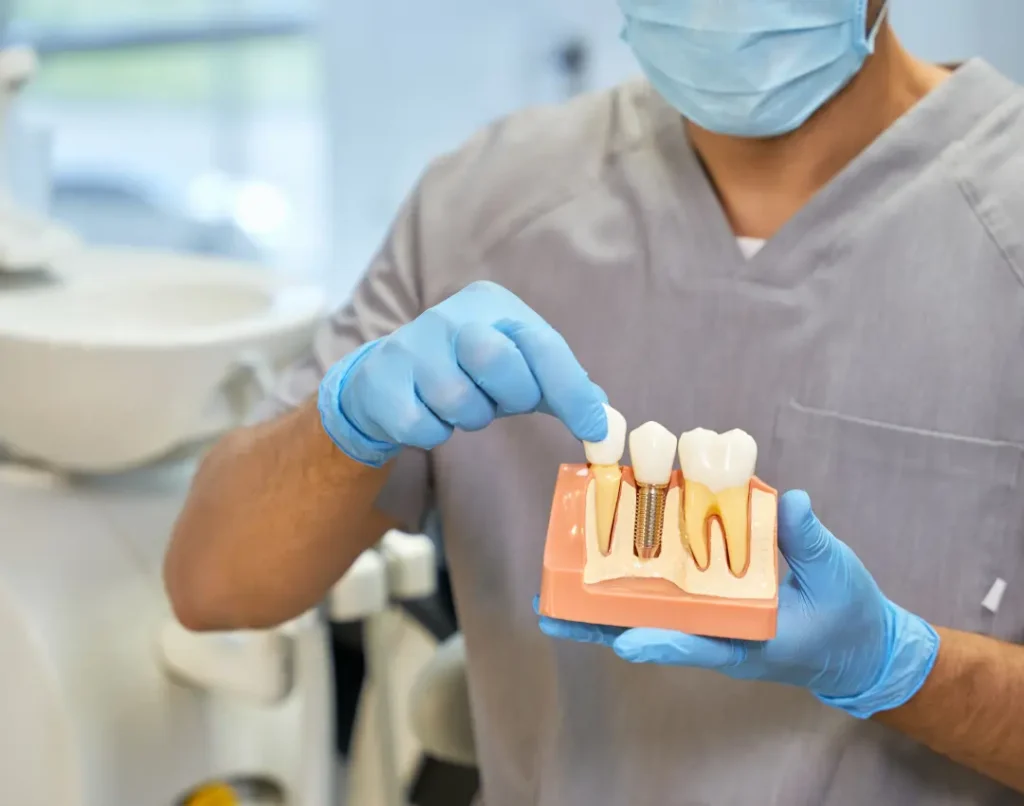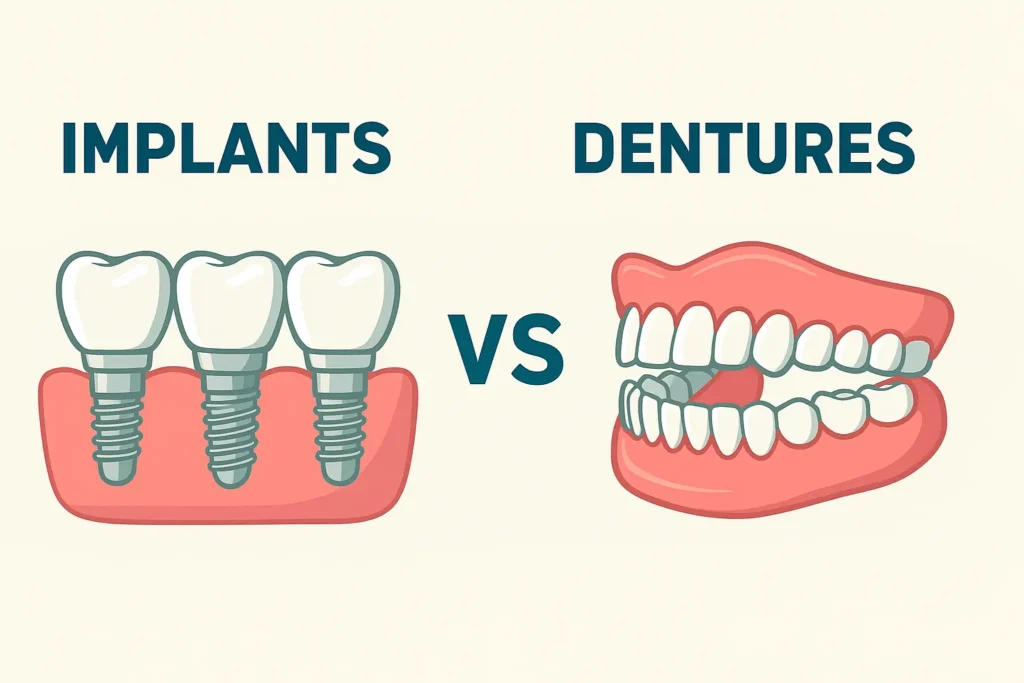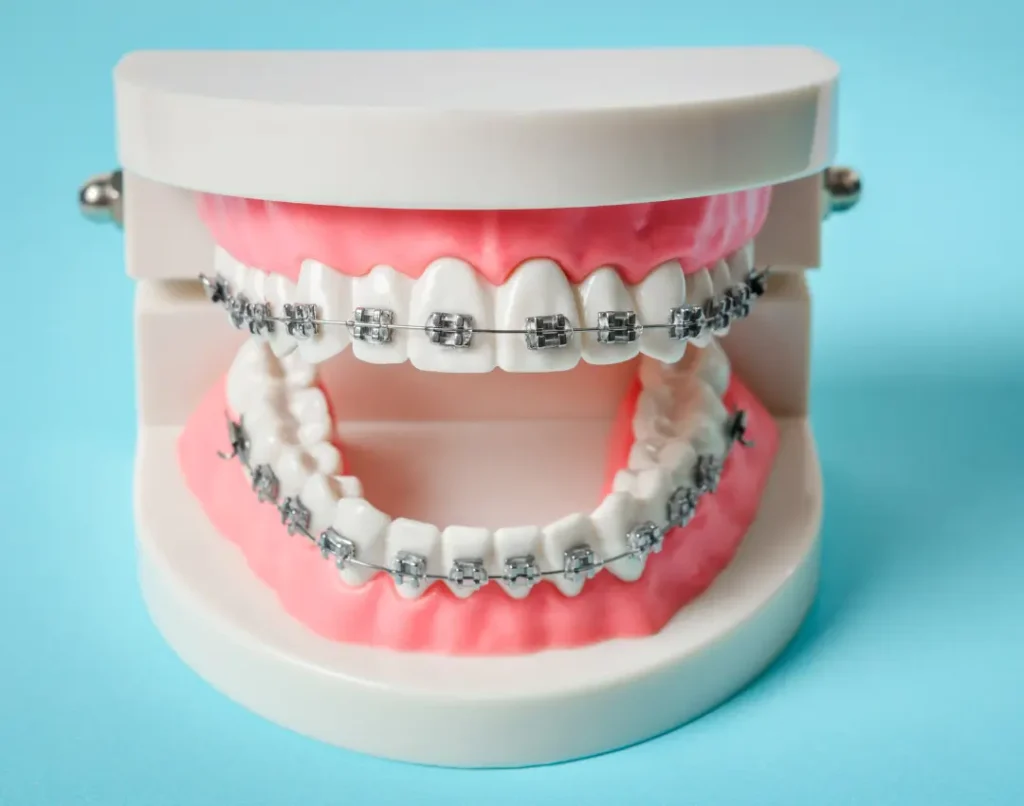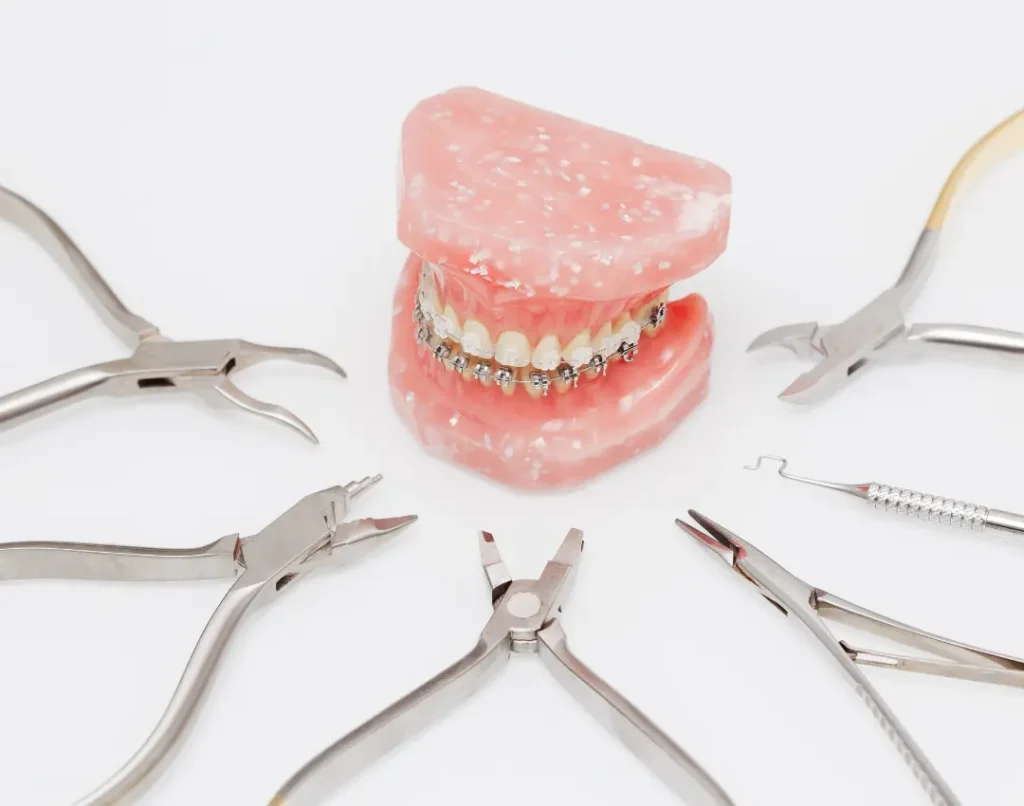Have you ever felt self-conscious about your protruding teeth or not aligning quite right when you bite down? If so, you may be dealing with an overjet and overbite.
These common alignment issues can affect not only the way your teeth look but also how comfortable they feel.
An overbite happens when your upper front teeth cover too much of your lower teeth, which can lead to jaw pain, tooth wear, and even trouble chewing.
On the other hand, overjet – often called “buck teeth” – is when your top teeth stick out horizontally beyond your bottom teeth. This can make it hard to fully close your lips, chew comfortably, or even speak clearly.
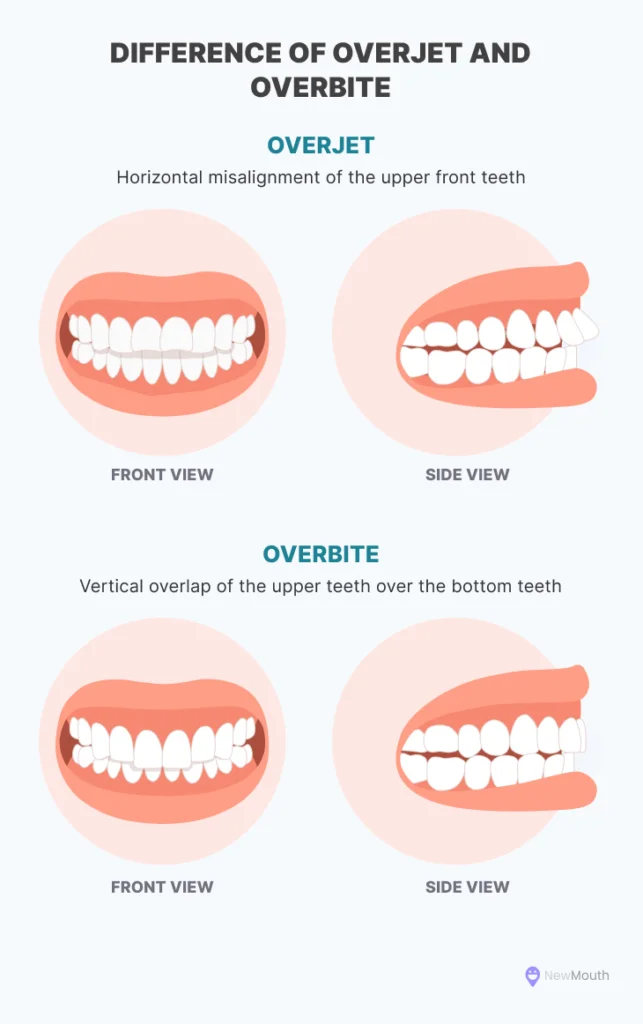
Whether it’s difficulty biting, discomfort while chewing, or worries about how your teeth look, overbite and overjet can significantly impact your daily life.
Luckily, with a variety of treatment options available, these conditions are manageable and treatable at any age, so you can get back to smiling, speaking, and eating with confidence.
Let’s break it down simply. If your top front teeth cover too much of your lower front teeth when you bite down, that’s an overbite. This is a vertical overlap, meaning your upper teeth extend downward over your lower teeth.
If your upper front teeth stick out horizontally past your lower front teeth, you’re looking at an overjet – sometimes known as “buck teeth.” This can make the upper teeth appear pushed forward, often affecting your bite and smile shape.
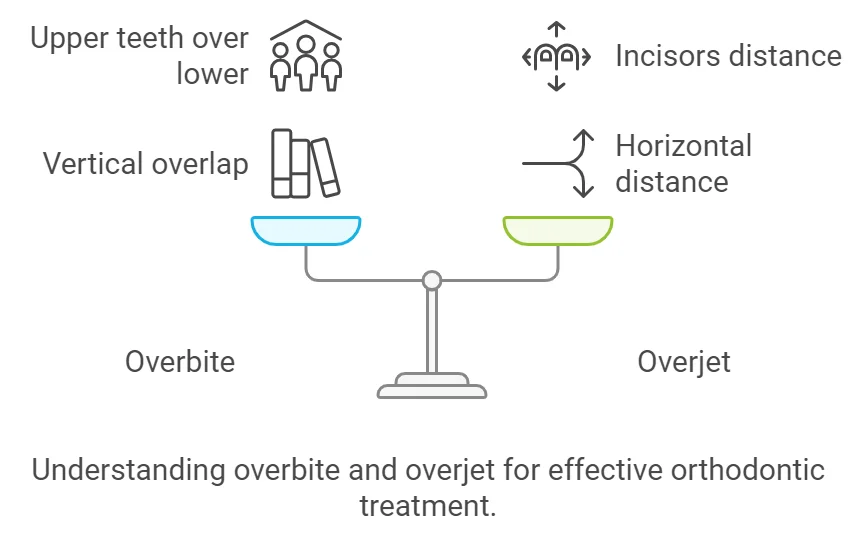
You might wonder, “Why me?” Overbites and overjets are often inherited. So, if someone in your family had a similar bite, it could be genetic.
Childhood habits like thumb-sucking, extended pacifier use, or even bottle-feeding for too long can also play a big role in developing these conditions.
Finally, jaw development patterns—like an upper jaw that grows faster than the lower one—can lead to these types of misalignment
By understanding these basics, you’re already one step closer to finding the best way to manage and improve your bite!
If you’re dealing with an overbite or overjet, you may notice some real discomforts. Chewing might be difficult, as your teeth don’t align properly.
You could experience jaw pain, especially when talking or eating. Overbites can also lead to tooth erosion and gum irritation because of the pressure your teeth place on each other.
With an overjet, closing your lips completely might be a challenge, and you could even struggle with certain speech sounds.
These conditions aren’t just about looks—they can impact your health, too. Misaligned teeth are harder to clean, which means an increased risk of cavities and gum disease.
Both overbite and overjet can also strain your temporomandibular joint (TMJ), which can lead to more serious issues like chronic jaw pain, headaches, and even earaches.
We all want a smile that makes us feel confident. Noticeable overbite or overjet can affect the appearance of your smile and even your facial profile.
For many people, this can lead to self-esteem issues. Feeling self-conscious about how your teeth look might make you hesitant to smile or laugh, and that’s no fun.
Correcting these issues can be a big step toward regaining confidence in how you look and feel each day
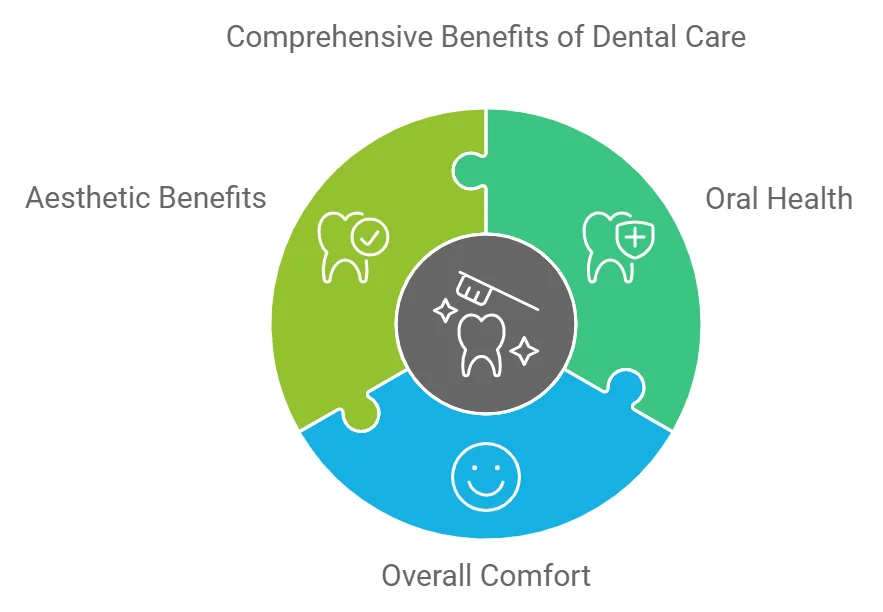
If you’re noticing signs of overbite or overjet, a visit to your dentist or orthodontist can make all the difference.
As professionals. we can accurately diagnose the type and severity of the misalignment through physical exams and X-rays.
We measure how far your teeth overlap or protrude, and can even show you what’s happening with your bite using dental imaging. This information helps us recommend the best treatment plan for you.
Don’t wait until discomfort becomes a problem—regular dental check-ups are essential, especially for kids.
Catching an overbite or overjet early can prevent the need for more complex treatments down the road.
Dentists can often spot signs of misalignment in children as young as seven, which means early intervention might allow for simpler solutions, like braces or expanders, rather than surgery later in life(
So, how do you know if it’s time to consult a professional? Here are a few signs that might prompt a visit:

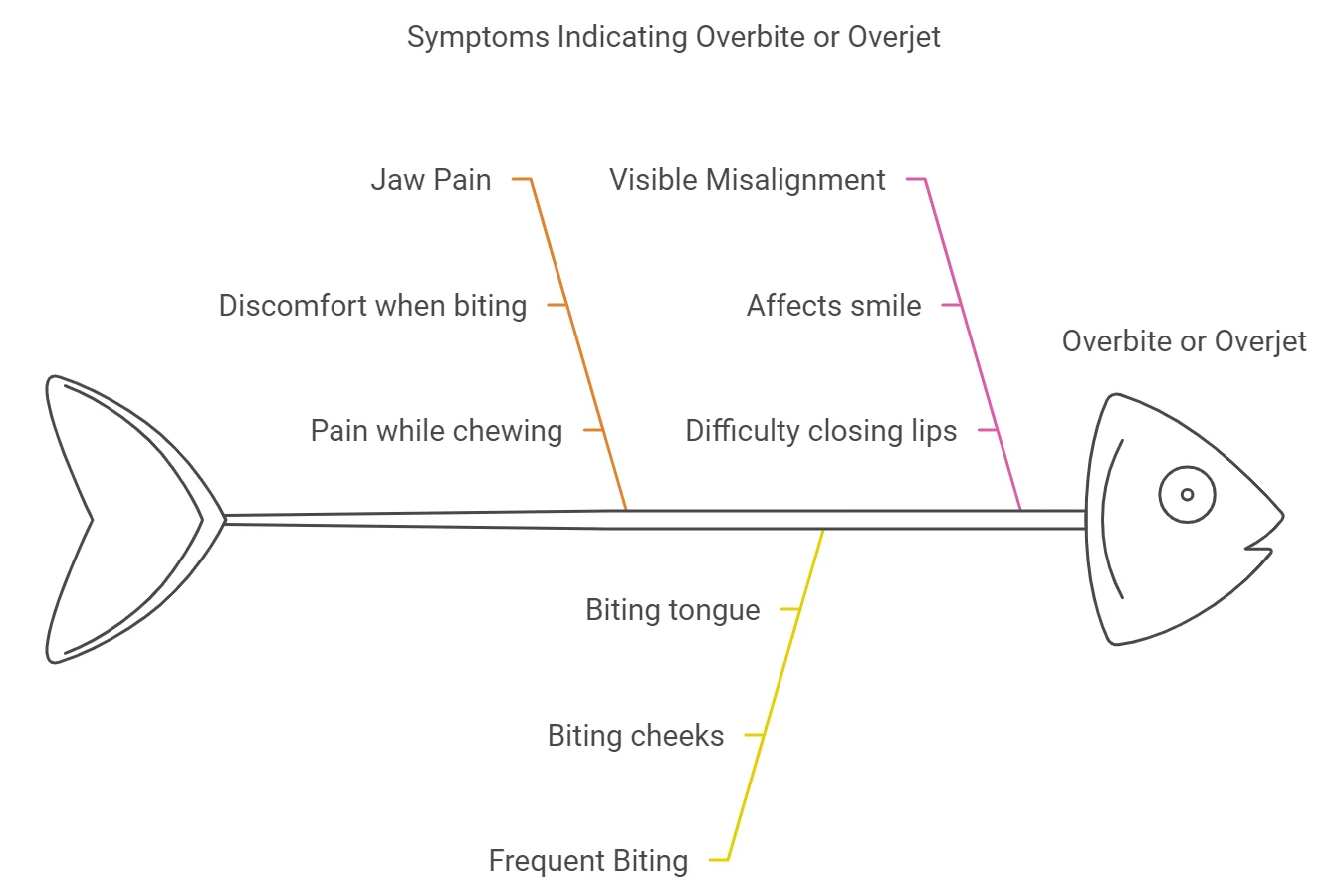
If you’re experiencing any of these symptoms, reaching out to a dentist or orthodontist can help you address the issue early and prevent more severe complications.
The sooner you tackle the problem, the sooner you can enjoy a healthier, more comfortable smile
For mild to moderate overbite or overjet, non-invasive treatments can be a great starting point.
Orthodontics offers effective options for more significant cases of overbite or overjet.
For severe cases where non-invasive and orthodontic treatments won’t be enough, surgery may be recommended.
Whether you’re considering clear aligners or surgery, there are multiple paths to achieving a healthier and more comfortable smile. Consulting with a dentist or orthodontist can help you find the best option for your needs and goals.
How long your treatment takes depends on your unique needs. Braces generally require one to three years to correct moderate to severe cases of overbite or overjet.
They work gradually, realigning the teeth over a series of adjustments. Clear aligners like Invisalign, on the other hand, can often complete treatment in a shorter time frame for milder cases—sometimes in as little as six months to two years if the alignment issues aren’t too severe.
Orthodontists can give you a more specific timeline based on your case.
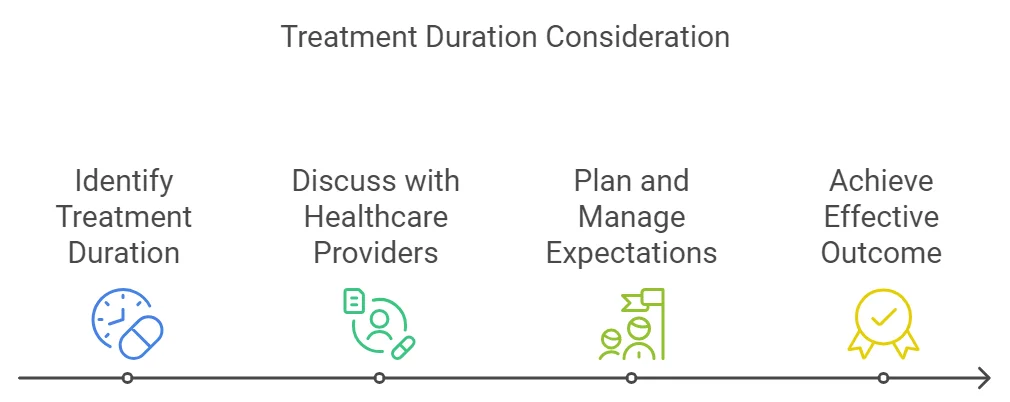
The cost of treatment varies significantly. Braces tend to be more affordable, but clear aligners often come with a higher upfront cost.
Factors such as the type of treatment, the complexity of your case, and your location can all influence the total cost. Keep in mind that clear aligners offer added convenience and aesthetic benefits, which can contribute to the price difference.
Some insurance plans may cover part of the cost, so it’s worth checking your policy to see what’s included.
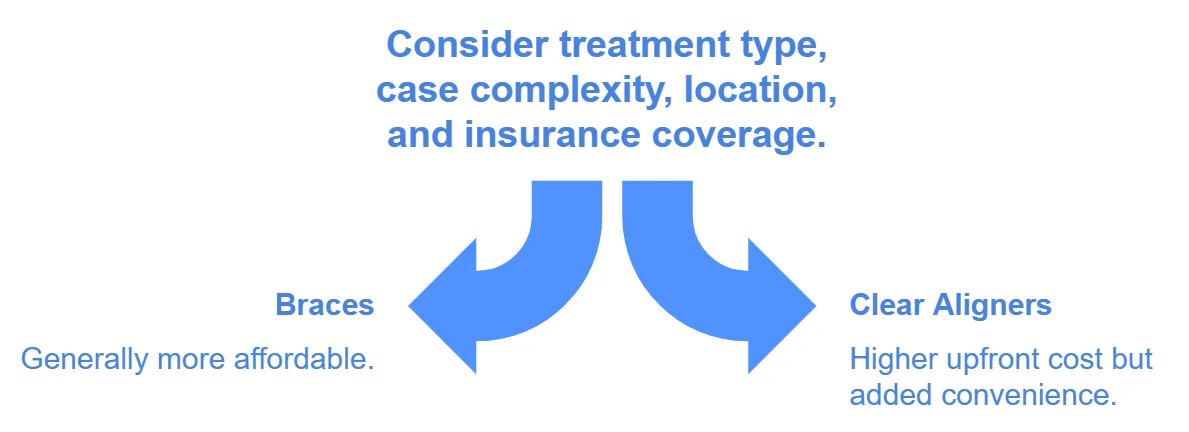
Braces and clear aligners each have their own lifestyle considerations. Braces require adjustments to your diet and routine, as certain foods—like sticky or hard snacks—are off-limits to avoid damaging the brackets.
Plus, maintaining good oral hygiene can be more challenging with braces, as you’ll need to brush and floss carefully around the brackets and wires.
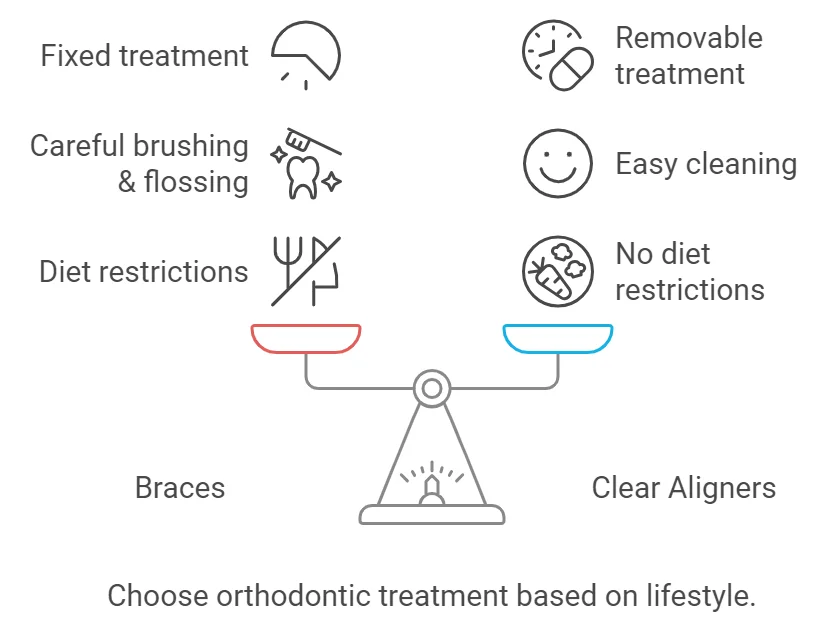
Clear aligners offer more flexibility since you can remove them for eating and cleaning. However, for effective results, you must wear them for 20–22 hours daily.
Skipping wear time can prolong treatment, so commitment is key with aligners. Consider your lifestyle and daily routine to choose the best option for you.
Understanding these aspects can help you make an informed decision about which treatment fits best with your lifestyle, budget, and goals for a straighter smile.

Once you’ve completed treatment, you’ll need to wear a retainer to maintain your new smile. Retainers keep your teeth from shifting back to their original positions, which is especially important in the first few months after treatment.
Many retainers are worn only at night, so they’re easy to work into your routine. Your orthodontist will give you specific guidelines on how long you’ll need to wear your retainer, which can vary depending on your case.
Even after treatment, regular dental check-ups are essential for monitoring your oral health. During these visits, your dentist will ensure your teeth remain aligned and check for any other issues.
Routine cleanings and exams help catch potential problems early, like signs of tooth decay or gum disease, so you can maintain your healthy smile for years to come. Aim to see your dentist every six months, or as recommended.
For children, early intervention can help avoid or minimize alignment issues down the line. Limiting habits like thumb-sucking and pacifier use can reduce the risk of developing overbite or overjet.
Regular dental assessments from a young age allow professionals to monitor jaw development and detect any potential alignment issues early, making treatment simpler and more effective.
Preventative care goes a long way in setting up a strong foundation for lifelong oral health.
Following these steps ensures that you not only keep the results of your treatment but also support your overall dental health moving forward.
Choosing to treat an overbite or overjet offers many rewards beyond just a straighter smile.
When your teeth are properly aligned, you’ll likely feel a boost in self-confidence. Correcting these alignment issues not only improves your smile but also enhances your overall facial aesthetics. You’ll notice a more balanced look, which can make you feel more at ease sharing your smile with the world
Proper alignment reduces the risk of cavities, gum disease, and jaw pain by allowing your teeth to function as they should. Misaligned teeth are often harder to keep clean, which can lead to plaque buildup and other complications. By aligning your teeth, you’re setting yourself up for better long-term oral health and a reduced need for future dental work
Corrected alignment can improve basic functions like chewing, speaking, and even breathing. When your teeth and jaw are in the right position, you’ll find it easier to eat comfortably and speak clearly, and you may even experience better airflow while you sleep.
Altogether, these improvements contribute to a better quality of life, making daily activities easier and more comfortable
Investing in treatment for overbite or overjet means investing in your health, comfort, and confidence. By taking steps to correct these issues, you’re on the path to a healthier and more fulfilling future.

